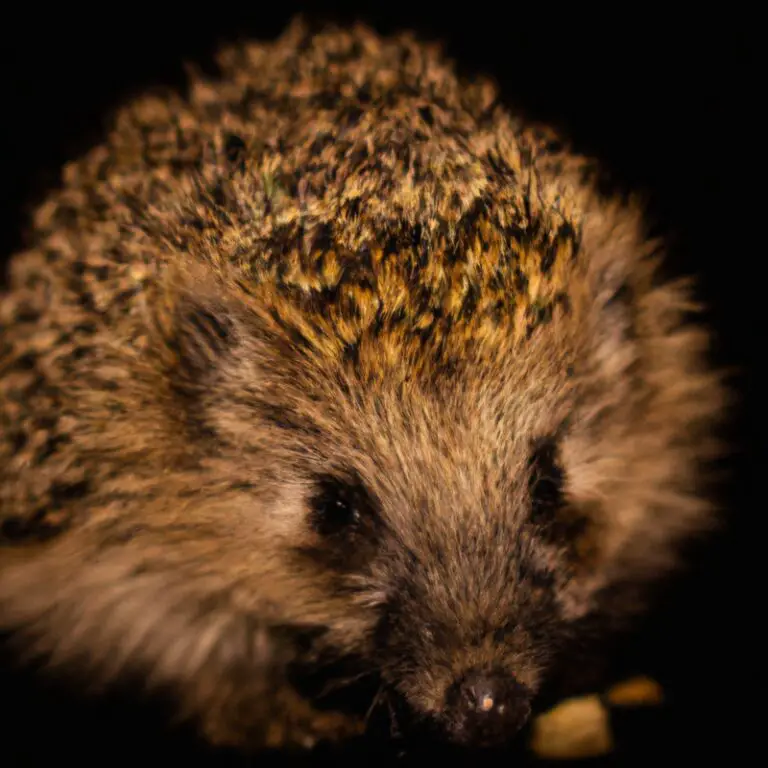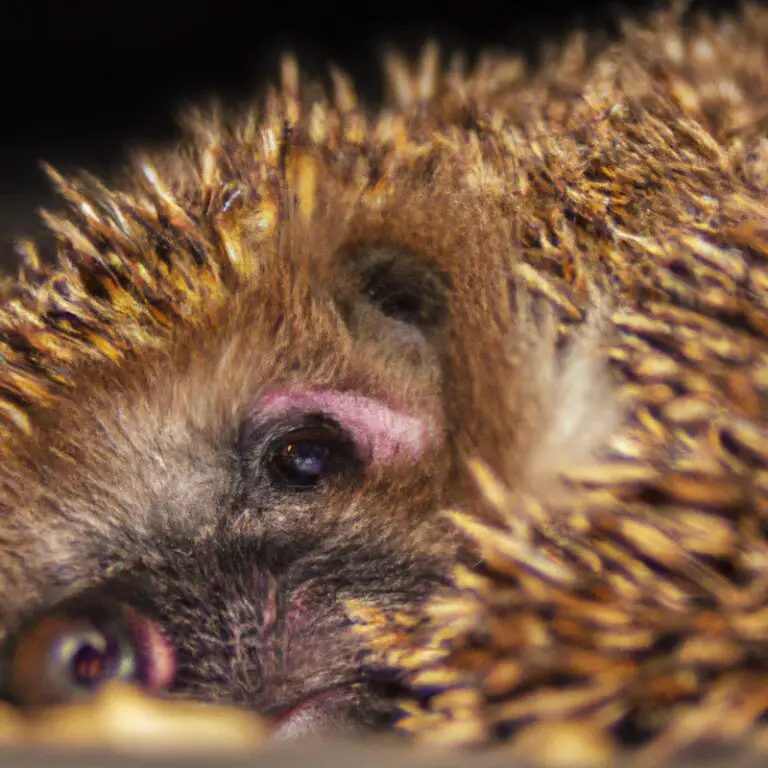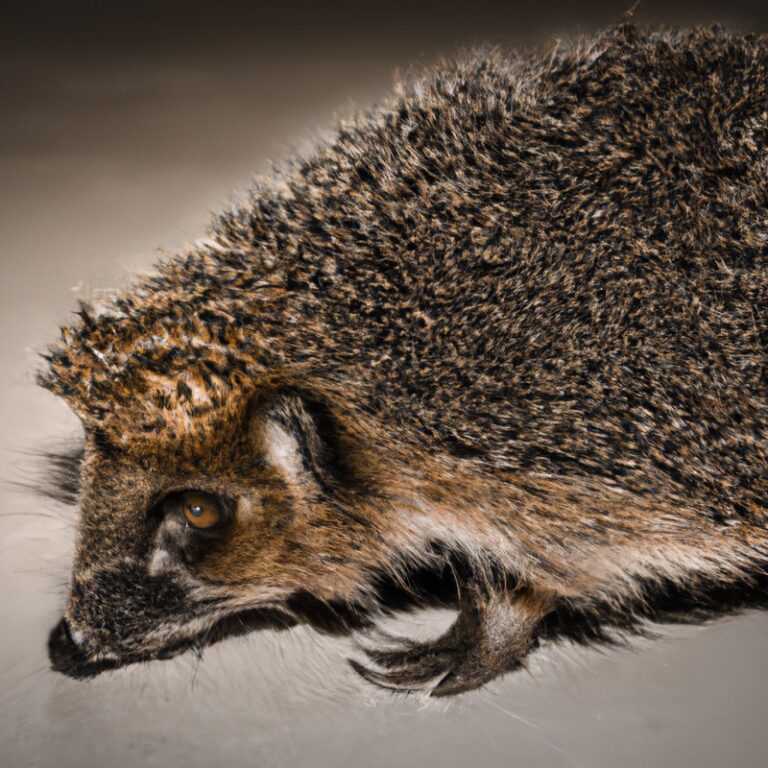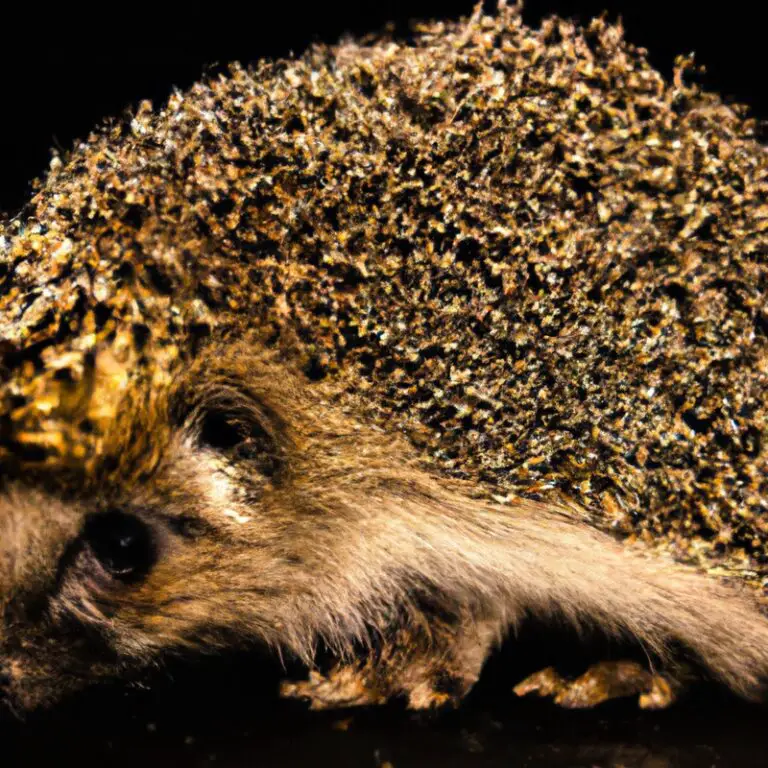How To Report Hedgehog Sightings For Conservation Efforts?
Key Takeaways:
- Record the location and time of hedgehog sightings to aid conservation efforts.
- Share hedgehog sightings with local conservation organizations to contribute valuable data.
- Use online platforms or apps designed for reporting wildlife sightings to streamline the process.
- Regularly report hedgehog sightings to help monitor population trends and inform conservation strategies.
Do you often come across these spiky little creatures while exploring your backyard or walking through the local park?
Well, those sightings of hedgehogs can be more than just a delightful encounter.
They can actually play a vital role in the conservation efforts for these adorable creatures.
So, how can you contribute to hedgehog conservation?
By reporting your hedgehog sightings, of course! In this article, we’ll explore why reporting hedgehog sightings is important, how to do it effectively and what other ways you can contribute to their conservation.
So, let’s dive in and make a difference for these fascinating creatures!
| Sighting Report | Contact Details |
|---|---|
| What to include in the report: | |
| Date and time of sighting | |
| Location of the sighting | |
| Number of hedgehogs observed | |
| Behavior or specific observations | |
| Additional notes or comments | |
| Contact Information: | |
| Name | |
| Phone number |
Why Reporting Hedgehog Sightings is Important for Conservation Efforts
Reporting hedgehog sightings is crucial for conservation efforts as it helps experts gather data on population distribution and trends, allowing for targeted conservation measures to be implemented.
The Decline in Hedgehog Populations
The decline in hedgehog populations is a concerning issue. Factors such as habitat loss, pesticides, and road accidents contribute to their decline.
Here are some key reasons behind the decline:
- Habitat loss: Destruction of hedgerows, urbanization, and intensive farming reduce their natural habitats.
- Pesticides: Chemicals used in agriculture harm hedgehogs directly and affect their insect prey.
- Road accidents: Increasing roads and traffic result in hedgehogs being hit by vehicles.
To address this decline, awareness, habitat conservation, and promoting hedgehog-friendly practices are essential.

The Role of Citizen Scientists in Hedgehog Conservation
Citizen scientists play a vital role in hedgehog conservation efforts.
Their observations and data help researchers to gain a better understanding of hedgehog populations, habitat preferences, and behavior.
By reporting hedgehog sightings and contributing to research projects, citizen scientists can provide valuable information that can guide conservation strategies and help protect this iconic species.
Engaging in citizen science initiatives can be a fun and rewarding way to contribute to hedgehog conservation and make a real impact in safeguarding their future.

How to Report Hedgehog Sightings
To report hedgehog sightings, you can follow these simple steps.
Choosing the Right Platform for Reporting
When it comes to reporting hedgehog sightings, choosing the right platform is important for effective conservation efforts. One option is to use online platforms specifically designed for reporting wildlife observations.
These platforms often have user-friendly interfaces and allow you to easily input important details about the sighting, such as the date, time, and location.
Another option is to report sightings to local wildlife organizations or conservation groups. They may have their own reporting systems in place or be able to direct you to the appropriate channels.
Whichever platform you choose, remember to provide accurate and detailed information to help researchers and conservationists track hedgehog populations and protect their habitat.
Providing Essential Information in Sightings Reports
When reporting hedgehog sightings for conservation efforts, it is important to provide essential information in your reports. Here are some key details to include:
- Location: Be specific about where you spotted the hedgehog. Provide the name of the street, park, or any landmarks nearby.
- Date and time: Note the date and time of the sighting. This helps researchers understand hedgehog activity patterns.
- Behavior: Describe what the hedgehog was doing. Was it foraging, crossing a road, or resting? Any details about its behavior can be valuable.
- Habitat: Mention the type of habitat where you saw the hedgehog, such as a garden, woodland, or urban area. This information helps monitor their habitat preferences.
- Additional observations: If you noticed anything else, such as signs of injury or the presence of other animals, include that in your report.
By including these essential details, you contribute valuable information that can aid in hedgehog conservation efforts. Your reports help researchers understand hedgehog populations, their behavior, and their needs, ultimately helping to protect these wonderful creatures.
Including Supporting Visual Documentation
Including supporting visual documentation is extremely helpful when reporting hedgehog sightings for conservation efforts.
By capturing clear photographs or videos of the hedgehog, you can provide valuable evidence to support your sighting.
Be sure to include important details in your documentation, such as the date, time, and location of the sighting.
This visual evidence can greatly enhance the credibility and accuracy of your report, leading to more effective conservation measures.
Frequently Asked Questions about Reporting Hedgehog Sightings
Why should I report hedgehog sightings?
Reporting hedgehog sightings is important for conservation efforts. By documenting where and when hedgehogs are spotted, researchers can gather valuable data on their population distribution and trends.
This information helps identify areas that need protection or intervention, such as creating wildlife corridors or implementing hedgehog-friendly practices.
Your sightings can contribute to a better understanding of hedgehog populations and guide conservation actions to ensure their survival in the wild. So, if you spot a hedgehog, report it and be a part of the conservation efforts!
How often should I report hedgehog sightings?
You should report hedgehog sightings as often as possible. The more information we have about their whereabouts, the better we can track their population and understand their habitat needs.
So, if you see a hedgehog, don’t hesitate to report it to your local conservation organization or wildlife authority.
Remember, every sighting counts!
Can I report hedgehog sightings from anywhere?
Yes, you can report hedgehog sightings from anywhere! Whether you spot a hedgehog in your backyard, a nearby park, or even while on vacation, you can contribute to conservation efforts by reporting these sightings.
Many organizations and wildlife conservation projects have online platforms or apps where you can easily submit your hedgehog sightings.
By doing so, you’re helping researchers and conservationists gather valuable data about the distribution and population of hedgehogs, which can aid in their protection and conservation.
So, if you come across a hedgehog, don’t hesitate to report it!
What should I do if I find an injured hedgehog?
If you find an injured hedgehog, here’s what you should do:
- Approach with caution: Hedgehogs are wild animals, so it’s important to approach them carefully to avoid causing more harm or stress.
- Protect yourself and the hedgehog: Wear gloves or use a towel to handle the hedgehog, as they may have spikes or carry diseases.
- Put it in a box or crate: Place the hedgehog in a ventilated box or crate with a towel or newspaper for bedding.
- Keep it warm: Place a hot water bottle wrapped in a cloth or a microwavable heat pad under the bedding to keep the hedgehog warm.
- Contact a wildlife rescue or veterinarian: Reach out to a local wildlife rescue center or veterinarian with experience in treating hedgehogs for further guidance.
Remember that it’s crucial to prioritize the well-being of the hedgehog and seek professional help as soon as possible.
Promoting Hedgehog Conservation through Reporting Sightings
By reporting hedgehog sightings, you can play a crucial role in promoting their conservation efforts.
Data Analysis and Monitoring Hedgehog Populations
To effectively monitor hedgehog populations, data analysis plays a vital role. This involves collecting and analyzing information on hedgehog sightings, habitats, and population trends.
By tracking these data, researchers can gain insights into the health and distribution of hedgehog populations.
This information helps in identifying conservation priorities and implementing targeted conservation measures. Monitoring hedgehog populations through data analysis allows for a better understanding of their status and helps inform conservation efforts.
Targeting Conservation Efforts in Specific Areas
To effectively target conservation efforts in specific areas, it is important to gather data on local wildlife populations and their habitats.
This can be done through surveys, camera traps, and citizen science initiatives.
By understanding the unique ecological needs of a particular area, conservationists can develop tailored strategies to protect and restore habitats, reduce threats, and promote biodiversity.
Collaborating with local communities and stakeholders is also key to ensuring the success of these targeted conservation efforts.
Raising Awareness and Encouraging Community Involvement
Raising awareness about hedgehog conservation is essential to protect these adorable creatures. Encouraging community involvement can make a significant difference.
Here are some ways you can raise awareness and get your community involved in hedgehog conservation:
- Share information: Spread the word about hedgehog conservation through social media, local newsletters, and community notice boards. Share facts, tips, and success stories to raise awareness.
- Organize events: Plan hedgehog-themed events like talks, workshops, or guided walks. Involve experts who can educate people about hedgehogs and conservation efforts. These events can help create a sense of community and inspire action.
- Create hedgehog-friendly spaces: Encourage your community to create hedgehog-friendly gardens by providing information on suitable habitats, food, and water sources. Organize garden makeovers and share before and after pictures to inspire others.
- Engage schools and youth groups: Collaborate with schools and youth organizations to incorporate hedgehog conservation into their curriculum or activities. Encouraging children and young people to learn about and care for hedgehogs from an early age can have a lasting impact.
- Support local projects: Find out if there are any local projects or organizations working towards hedgehog conservation. Offer your support by volunteering, fundraising, or spreading the word about their efforts.
Remember, every small action can contribute to the conservation of hedgehogs. By working together and involving your community, we can make a positive impact on their future.
Additional Ways to Contribute to Hedgehog Conservation
Another way to support hedgehog conservation is by creating hedgehog-friendly gardens and habitats. You can also contribute by building hedgehog houses to provide shelter for them.
Additionally, supporting local hedgehog rescue organizations is another way to make a difference.
Creating Hedgehog-Friendly Gardens
Creating a hedgehog-friendly garden is a simple and effective way to support hedgehog conservation efforts.
Here are some tips to help you create a welcoming habitat for these adorable creatures:
- Provide shelter: Leave areas of your garden wild and untidy, with brush piles or log piles, to provide safe places for hedgehogs to nest and hibernate.
- Create hedgehog highways: Cut small holes in fences or walls to allow hedgehogs to move freely between gardens, increasing their foraging range.
- Avoid using chemicals: Pesticides and herbicides can be harmful to hedgehogs. Opt for organic gardening methods to ensure a safe environment for them.
- Water source: Place a shallow dish or a small water feature in your garden to provide hedgehogs with a source of fresh water.
- Food supply: Encourage hedgehogs to visit your garden by leaving out a dish of cat or dog food, or specialized hedgehog food.
By making a few changes to your garden, you can create a haven for hedgehogs and contribute to their conservation.
Building Hedgehog Houses
Building hedgehog houses is a simple and effective way to help conserve these adorable creatures.
Here’s how you can do it:
- Find a suitable location in your garden, away from potential dangers like roads or busy areas.
- Create a sturdy wooden box with an entrance hole, making sure it’s big enough for a hedgehog to enter but small enough to keep predators out.
- Line the inside with dry leaves, straw, or grass to create a cozy nesting space.
- Place the hedgehog house in a quiet spot, preferably under dense vegetation or near a hedge.
- Ensure there’s easy access for hedgehogs by creating an inviting pathway of rocks or logs leading to the entrance.
- Regularly check the house for any signs of occupation and provide fresh bedding if needed.
By building hedgehog houses, you’re offering them a safe place to rest, hibernate, and raise their young.
Your efforts can significantly contribute to their conservation.
Supporting Local Hedgehog Rescue Organizations
Supporting local hedgehog rescue organizations is a great way to make a meaningful impact on hedgehog conservation. You can start by volunteering your time to help with rescues and rehabilitation efforts.
Additionally, you can donate money or supplies to these organizations to support their important work.
Another way to contribute is by spreading awareness about the importance of hedgehog conservation and sharing information about local rescue organizations on social media. Every effort counts in ensuring the well-being of these adorable creatures.
Final Verdict
Reporting hedgehog sightings is crucial for conservation efforts.
The decline in hedgehog populations necessitates the involvement of citizen scientists to gather valuable data.
By choosing the right platform, providing essential information, and including supporting visual documentation, we can contribute to the monitoring and targeting of conservation efforts.
Reporting sightings raises awareness, encourages community involvement, and supports the analysis of data to protect hedgehog populations.
Additionally, adopting hedgehog-friendly practices and supporting local rescue organizations are additional ways to contribute to conservation.
Let’s join forces and make a difference in preserving these beloved creatures for future generations.







